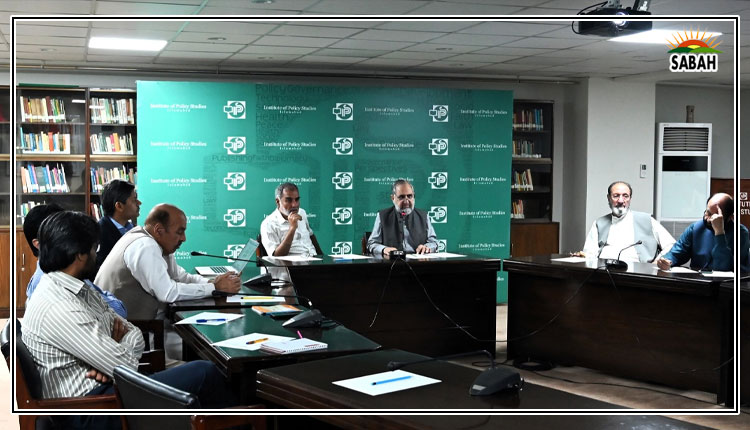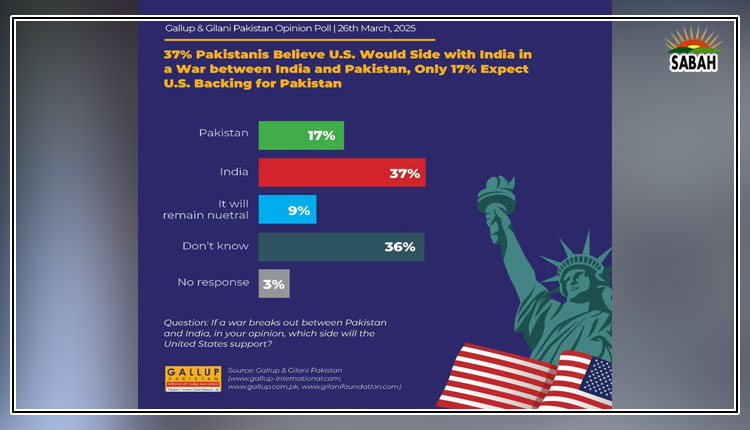How expensive are public servants?…Ajmal Kakar
Pakistans economy is in a transitional state with an excessive footprint of the government in social, political, and economic activities.
The size of public-sector employment/employees is disproportionately large relative to the private sector. This is because people actively seek public-sector jobs for lifetime insurance/security and lucrative perks provided by the sector.
Our study at the Pakistan Institute of Development Economics (PIDE) reveals that a majority of PhD holders seek government jobs as their prime dream/destination.
A representational image of a person using a tablet on a phone. Unsplash/File
A representational image of a person using a tablet on a phone. Unsplash/File
Thus, the demand for public-sector jobs (sarkaari naukari) is high, with negative implications for the system such as social polarization, rent-seeking, malpractices, political job creation, expansion of government entities and departments, reducing the efficiency and equity, and bring about unnecessary expenditures resulting in fiscal deficit and other inefficiencies.
PIDE recently conducted a study on the subject Budgeting for the Future: Lifetime Cost and Length of Service of Public Sector Employees in Pakistan. This study estimates the discounted lifetime cost and length of service of public-sector employees in Pakistan, utilizing the revised BPS pay scales of 2022 for three different scenarios. The lifetime cost encompasses lifetime salaries, commuted pensions, and monthly pensions for an employee
The findings of the study divulge that in the first scenario (if employees retire in their 60s), on average, a Class-4 employee (BPS 1-4) will receive Rs28.7 million in the form of salary, Rs1.2 million as a commuted pension, Rs2.1 million as a monthly pension to the employee, and Rs4.8 million as a survivors pension. Thus, the average lifetime cost of such an employee is Rs36.9 million.
The average lifetime salaries of supporting staff (BPS 5-16) are around Rs45.8 million, with a commuted pension of Rs2.1 million, Rs3.41 million as a monthly pension to the employee, and Rs7.9 million as a survivors pension. Consequently, the discounted lifetime cost of supporting staff (BPS 5-16) is Rs59.1 million.
The study further estimates the discounted lifetime cost of professional staff (BPS 17 and above). On average, the lifetime salaries of BPS 17 and above amount to Rs104.7 million, with a commuted pension of around Rs5.7 million, Rs9.0 million as a monthly pension to the employee, and Rs21.1 million as a survivors pension. Thus, the discounted lifetime cost of professional staff (BPS 17 and above) is Rs140.5 million in Pakistan.
In the second scenario, (when the government employee retires after serving 25 years), on average, the discounted lifetime cost of a grade or Class-4 employee is around Rs29.8 million. The average discounted lifetime cost of supporting staff is around Rs46.9 million rupees, and that of BPS 17 and above is Rs125.8 million.
Lets discuss the third and final possible option available to public servants to claim their pension. In this scenario, the PIDE study estimates the discounted lifetime cost of public servants if a government employee serves for 10 years and unfortunately passes away.
The study finds that in that case the average lifetime cost of a Class-4 employee is Rs25.2 million. The average lifetime cost of supporting staff is around Rs34.3 million, while the discounted lifetime cost of BPS 17 and above is Rs59.1 million in Pakistan. In the third scenario, the majority of the cost is in the form of a survivors pension, irrespective of the grade scale.
Struggling for its survival, Pakistan is crying for reforms in every sector. Why cant the caretaker government and the Special Investment Facilitation Council (SIFC) start with public-sector employment reforms? Initiating these reforms demands a shift in the mindset of the youth, viewing the government not as the primary job provider but as a facilitator.
Such transformative changes will not only stimulate growth and development but also curtail rent-seeking behavior, malpractices, and political job creation. By discouraging undesirable hiring practices, the government can effectively downsize, leading to a leaner and more efficient public sector.
Bringing reforms to public-sector employment regulations and encompassing merit-based recruitment, performance assessments, and remuneration frameworks are crucial to ensure the long-term fiscal stability of public organizations. This will in turn create an environment conducive to the boost of the private sector.
Courtesy The News












